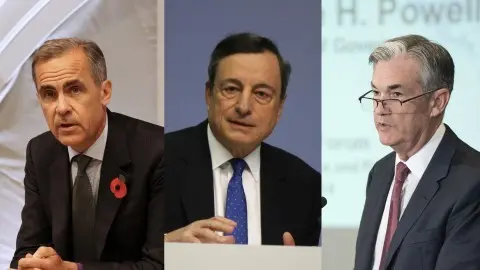Bank of Russia confirms it’s in ‘standby’ mode
Bank of Russia fully confirmed our expectations by keeping the key rate at 7.5% and maintaining a cautious tone. The upcoming decisions are likely to be 'hold' - unless there are external shocks and/or local gasoline price growth fails to be addressed
| 7.5% |
Russia key rateRhetoric unchanged |
| As expected | |
CBR decision and reasoning in line with expectations
The Bank of Russia's decision to keep the key rate unchanged at 7.5% was in line with the consensus and our expectations. The reasoning behind the decision also doesn't surprise:
- CPI is on track to accelerate from the current 3.5% year-on-year toward 3.8-4.2% YoY by year-end 2018 and 5.0-5.5% by year-end 2019 as a result of rouble depreciation pass-through and the upcoming VAT hike
- Households' 12-month expectations somewhat improved in October (i.e. remaining near 10%, though no specific figure was provided)
- GDP growth expectations from 2018-19F remain unchanged at around 1.5-1.7%
- Financial markets have calmed since the September decision to put FX purchases on hold and raise the key rate by 25 basis points
Russia’s central bank to wait and see till December
Upcoming decisions likely to be between 'hold' and 'hike'
There was also no change in the assessment of the inflationary risks, which is also in line with our expectations. That highlights the uncertainties faced by the monetary authorities in the near- to mid-term. For now, we expect the key rate will remain unchanged until the end of next year under the assumption that the CPI will stay within the central bank (CBR) guidelines (including a temporary spike to 5.5-6.0% YoY in 1H18). At the same time, we acknowledge that the risks to our view on the CPI and key rate are tilted upwards.
- The most obvious risk is external, which was directly mentioned in the CBR communique - including continued capital outflows from emerging markets and Russia-specific foreign policy risks. Remember that since April there were some RUB550 billion capital outflows from the state bond market (OFZ) and RUB8/USD depreciation - mostly on the back of global emerging market outflows. Still, non-residents hold around RUB1.8 trillion of OFZ, and we doubt that further tightening in sanctions has already been priced in.
- The less obvious risk - the one CBR didn't mention - is the growing uncertainty regarding the local gasoline price growth. After a stable May-September, gasoline prices are back to 0.1% week-on-week growth since October. According to the media, the upcoming increase in excise tax and the overall tax changes in the oil industry may trigger an increase in the local gasoline prices by around 10%. The direct impact of such a spike on the CPI could be 0.4 percentage points (based on the gasoline's weight in the CPI basket). However, the secondary effects could amplify the potential deterioration in the inflationary trend. For now, it remains unclear whether the government will prevent this growth via budgetary or other means.
Our base-case scenario is unchanged 7.5% key rate in the upcoming meetings, but the risks to this view are tilted upwards.
This publication has been prepared by ING solely for information purposes irrespective of a particular user's means, financial situation or investment objectives. The information does not constitute investment recommendation, and nor is it investment, legal or tax advice or an offer or solicitation to purchase or sell any financial instrument. Read more
Download
Download snap
26 October 2018
In case you missed it: A flurry of central bank meetings This bundle contains 11 Articles